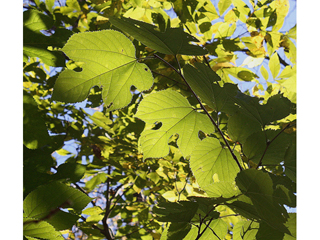Photograph by: wildflower.org
What is this plant?
Red Mulberry (Morus rubra) is a native North American tree that can grow up to 35 feet tall. The tree has reddish-brown bark and produces small, dark fruits that are edible and high in vitamins and minerals. Red Mulberry (Morus rubra) is a great plant for attracting birds and other wildlife. The tree is also wind-resistant and can tolerate drought. Red Mulberry (Morus rubra) is best when planted in zones 4-9.
Plant Information
Plant Type: Tree
Light: Full sun to partial shade
Height: Can grow up to 35 feet tall
Days to Maturity: Seeds germinate in 14-21 days. Trees can bear fruit within 2-3 years.
Zone: 4-9
Color: Red, Brown
Bloom Time: April-June
Other: Red Mulberry can spread aggressively
Growing from Seed
Seeds can be started indoors in late winter or early spring. Seeds can be planted outdoors when the soil has warmed to at least 65°F. If sowing from seed, trees may not bear fruit for 2-3 years.
Growing from Seedling
Dig a hole that is twice the size of the pot’s diameter. Set the plant in the hole so the root ball is level with the surface of the soil. Fill in the hole to cover the top of the root ball. Space your seedlings/plants about 15-20 feet apart.
Growing & Care Tips
Once Red Mulberry trees are established, they are drought tolerant. New plants will need to be watered more frequently, especially during a dry spring. If the plant is native to your region, you should not need to add any fertilizer. During the spring, the tree will produce small, dark fruits that are edible and high in vitamins and minerals. The fruits can be eaten fresh or used to make jams and jellies. After frost, or during winter, you can cut the stems down to soil level.
Plant Uses & Benefits
- Edible
- High in vitamins and minerals
- Can be used to make jams and jellies
- Attracts birds and other wildlift
- Wind-Resistant
- Drought-Tolerant
History of the Plant
Red Mulberry is a native North American tree that has been used by Native Americans for centuries. The tree was used for food, medicine, and crafts. The tree is still used today for food and medicine.
References
www.almanac.com
www.wildflower.org

